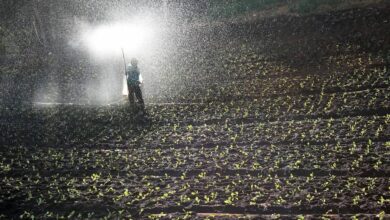Alpine Climate: [Characteristics, Flora, Fauna and Adaptability]
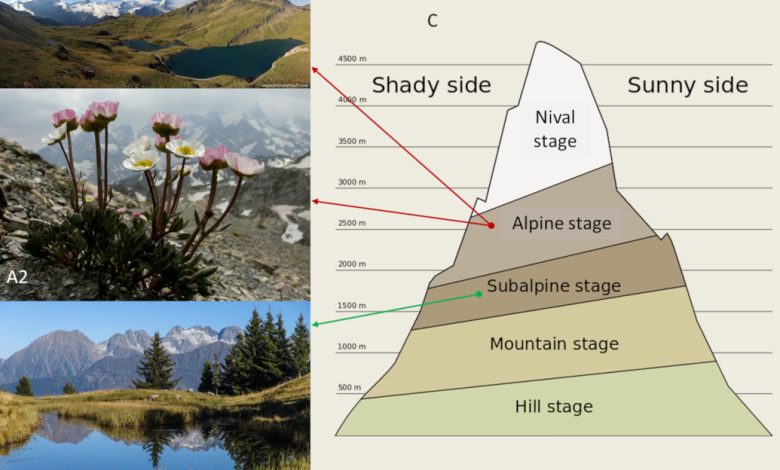
Important points about Alpine Climate:
- What is? The alpine climate is one that is established within the tundra ecosystems that are formed in reliefs of high altitude.
- Where it is located? The alpine climate is found on all continents, with the exception of Antarctica, where the climate is extremely cold.
- What flora predominates? The predominant ecosystems here are grasslands, alpine tundras and scrublands. It is possible to find lichens, mosses, bushes with tiny flowers and small leaves, and pine-type trees.
- What fauna predominates? The representative fauna of the alpine climate is made up of goats, rabbits, marmots, moose, sheep, beetles, grasshoppers, white leopard, alpaca, among other species.
- How long is the day and night? It is possible that in winters up to 15 hours of twilight and 7 hours of sunshine are reached, the opposite being true in summer.
- Can human beings live in this climate? Many areas with an alpine climate are populated because their conditions are not so extreme as to prevent life.
 The alpine climate is a climate that has the property of being cold most of the time, but not in an extreme way.It is a subtype of the tundra climate family and is found scattered in various parts of the world.
The alpine climate is a climate that has the property of being cold most of the time, but not in an extreme way.It is a subtype of the tundra climate family and is found scattered in various parts of the world.
It establishes itself in areas that are elevated, but not high enough to reach the freezing point that occurs, for example, in frigid weather.
Are you interested in knowing the differences between this type of climate and others with similar characteristics? Here we will tell you all.
What is alpine climate?
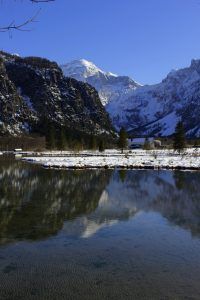 The alpine climate is one that is established within the tundra ecosystems that are formed in reliefs of high altitude.
The alpine climate is one that is established within the tundra ecosystems that are formed in reliefs of high altitude.
It is a cold climate, but without reaching extremes, with possible temperatures that are more or less cool during the year.
Its main ecosystems are the meadows and the bushes, which keep the vegetation typical of these geographical areas.
In areas where there are forests, the alpine climate is located just above the treetops. The easiest way to differentiate it from other cold climates is to check the temperature it reaches during the summer, which should be between 0 and 10º C.
Where is the alpine climate located geographically?
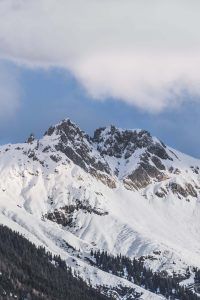 The alpine climate is found on all continents, with the exception of Antarctica, where the climate is extremely cold.
The alpine climate is found on all continents, with the exception of Antarctica, where the climate is extremely cold.
The relief is decisive to establish the alpine climate because it is usually present at elevations that exceed 4,000 meters above sea level.
For example, in the Andes Mountains there is the Puna, specifically in Peru, where the mountainous formations have this climate. Other areas where it is possible to see the alpine climate are Chile, Argentina, China, Colombia, Bolivia and Venezuela.
What characteristics does the alpine climate have?
Defining that an area has an alpine climate is not as simple as one might think because it is similar to the tundra climate. One way to avoid confusion is by looking at the characteristics that represent it and we will list them below:
- Temperatures: they are mostly cold, around 10º C. However, it is possible that even lower temperatures will be recorded as altitude increases. The latitude of the site also plays a leading role.
- Types: although it is a very specific climate of certain regions, it is possible to find up to two variations depending on the latitude in question. One variety is the humid alpine climate and the other is a dry variety.
- Precipitation: it is not very frequent during the year, which means that the vegetation is not so striking either. Snowfall may be received due to the low temperatures that create layers of ice on the ground and that last for some time.
- Winds: gusts of wind may occur at times. These are low temperature and do not last very long.
- Seasons: a long winter is observed that can occupy up to 2/3 of the year and a shorter summer. However, there are times when the temperature range of the day presents an important variation in what is seen during the mornings and later in the evenings.
An important aspect within the alpine climate is the structure of the relief where it develops, since it is usually ascending.
This implies that in the initial part of an ecosystem with an alpine climate, a temperature can be managed, while in the final point (which will be higher) the temperature will be lower.
What flora predominates in the alpine climate?
 Although it is a predominantly cold climate, the alpine climate does allow the life of certain types of plants. The predominant ecosystems here are grasslands, alpine tundras and scrublands.
Although it is a predominantly cold climate, the alpine climate does allow the life of certain types of plants. The predominant ecosystems here are grasslands, alpine tundras and scrublands.
It is possible to find lichens, mosses, bushes with tiny flowers and small leaves and some pine-type trees.
However, due to the low temperatures, it is not possible to generate the growth of large trees that need more warmth.
In addition to that, they are usually areas with a low level of carbon dioxide, which affects the rate of photosynthetic work that plants need.
What fauna predominates in the alpine climate?
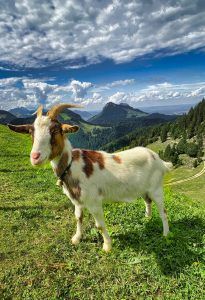 Many types of animals can also survive in the alpine climate, especially mammals and insects that are adapted to these conditions.
Many types of animals can also survive in the alpine climate, especially mammals and insects that are adapted to these conditions.
Of course, in addition to the cold, it is necessary to consider that the altitude forces us to enjoy lower levels of oxygen, so it is not a favorable environment for all kinds of species.
The representative fauna of the alpine climate stands out with: goats, rabbits, marmots, moose, sheep, beetles, grasshoppers, white leopard, alpaca, among others.
How long is the day and night in the alpine climate?
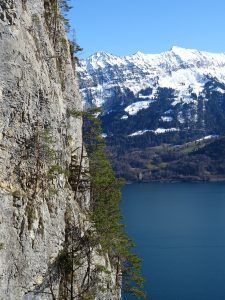 The alpine climate is found in areas of the world that are usually very bright most of the day, which also leads to a large amount of radiation.
The alpine climate is found in areas of the world that are usually very bright most of the day, which also leads to a large amount of radiation.
However, the length of day and night will be defined by the area of the world where the alpine climate is being studied.
This follows the more general pattern of winters being darker and summers brighter.
And, in numbers, it is possible that in winters up to 15 hours of darkness and 7 hours of sunshine are reached, the opposite being true in summer.
Can humans live in the alpine climate?
 Many areas with an alpine climate are populated because their conditions are not so extreme as to prevent life.
Many areas with an alpine climate are populated because their conditions are not so extreme as to prevent life.
Although in most cases these are high-altitude areas that are far from the big cities, they offer the possibility of developing some crops.
This is because many of them need to be in a cold climate to thrive, but without the ground freezing from frost.
The alpine climate is cold, but maintains the minimum conditions necessary for plant, animal and human life to develop without inconvenience. In some cases it is usually visited by tourist actions, since it is ideal for practicing cold sports, such as skiing.
Have you ever visited an area with an alpine climate? If so, you can leave us your impressions below that we will gladly read you.
Bibliographic references
- Alpine vegetation of the Popocatépetl, Iztaccihuatl and Nevado de Toluca volcanoes, I LUNA, JJMYD ESPINOSA… – researchgate.net
- The conservation of the Spanish alpine mountains and human well-being, F Fillat, J Aguirre, F Pauné, C Fondevilla – 2012 – digital.csic.es
- Alpine mosses from Nevado de Colima, Mexico, C Delgadillo – Botanical Sciences, 1987 – botanicalsciences.com.mx
- Persistent seed banks: delayed germination models and their application in alpine environments, L Cavieres – Rev. Chil. Hist. Nat, 1999 – rchn.biologiachile.cl
- Photosynthesis, growth and resistance to extreme environments in lichens from polar and alpine regions, J Raggio Quilez – 2013 – eprints.ucm.es
Maybe you are also interested in:
- Koppen climate classification: [Concept, Characteristics and Types of Climates]
- Arid Climate: [Characteristics, Flora, Fauna and Adaptability]
- Temperate Continental Climate: [Characteristics, Flora, Fauna and Adaptability]
- Continental Climate: [Characteristics, Flora, Fauna and Adaptability]
- High Mountain Climate: [Characteristics, Flora, Fauna and Adaptability]
- Climate of Argentina: [Characteristics, Flora, Fauna and Adaptability]
- Australia Climate: [Characteristics, Flora, Fauna and Adaptability]
- California Climate: [Characteristics, Flora, Fauna and Adaptability]
- Climate of Europe: [Characteristics, Flora, Fauna and Adaptability]
- Tundra Climate: [Characteristics, Flora, Fauna and Adaptability]
- Equatorial Climate: [Characteristics, Flora, Fauna and Adaptability]
- Cold Climate: [Characteristics, Flora, Fauna and Adaptability]
- Cold Weather: [Characteristics, Flora, Fauna and Adaptability]
- Mediterranean Climate: [Characteristics, Flora, Fauna and Adaptability]
- Ocean Climate: [Characteristics, Flora, Fauna and Adaptability]
- Polar Climate: [Characteristics, Flora, Fauna and Adaptability]
- Subpolar Climate: [Characteristics, Flora, Fauna and Adaptability]
- Subtropical Climate: [Characteristics, Flora, Fauna and Adaptability]
- Subhumid Temperate Climate: [Characteristics, Flora, Fauna and Adaptability]
- Temperate Climate: [Characteristics, Flora, Fauna and Adaptability]
- Humid Tropical Climate: [Characteristics, Flora, Fauna and Adaptability]
- Dry Tropical Climate: [Characteristics, Flora, Fauna and Adaptability]

